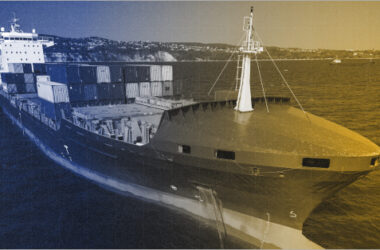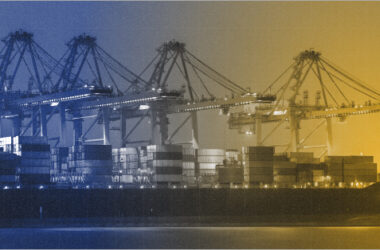The shipping industry is the very backbone of global trade as it transports billions of tonnes of cargo annually through the oceans. Where most products can be easily transported in standard containers, there is one category of freight that does not fit into these dimensions: Over Dimensional Cargo (ODC). ODC is not a logistical challenge; it is also a high risk venture because of its enormous size, complexity, and vulnerability to damage. This is the main reason why Marine Insurance for ODC is so important. It safeguards shipping companies against significant financial losses and also guarantees that shipments of even the biggest and most complicated characteristics can be made with certainty.
What is Over Dimensional Cargo (ODC)?
Over Dimensional Cargo is the cargo that is larger than the size or weight capacity of the traditional containers and transport vehicles. In basic terms, when a shipment does not fit a standard 20-foot or 40-foot container, it can often be considered ODC.
Examples of ODC include:
- Heavy machinery in mining or construction.
- Industrial turbines, generators, and transformers
- Large oil and gas equipment
- Infrastructure components such as bridges or windmill blades
ODC, in contrast to normal cargo, needs special handling equipment, modified trailers and in many cases special permission by authorities to transport it. It is more susceptible to risks due to its very nature, particularly when transported through the sea.
Challenges in Transporting Over Dimensional Cargo
ODC shipping is not a simple task. Each phase such as packaging and unloading presents different challenges.
- Complexity of Logistics: The transportation of oversized freight is a process that has to be planned thoroughly. Pathways should be selected with care to prevent limitations of height, width, and weight. This usually requires specialised ships and cranes.
- Regulatory Compliance: A lot of countries have stringent regulations in the transportation of ODC, such as permits, escort vehicles and inspection. Any non-compliance may lead to expensive delays.
- High Costs: The need for customised carriers, manpower, and special handling and transportation equipment significantly increases expenses compared to standard cargo.
- Transit Risks: Due to its size and uneven load distribution, ODC is more susceptible to accidents, especially in rough sea conditions.
- Time Constraints: ODC projects often operate on tight deadlines. Any delay in transit can lead to project setbacks and financial penalties.
These difficulties reflect why marine insurance is not a luxury precaution but a prerequisite in the businesses that carry ODC.
Why Marine Insurance is Crucial for ODC
When an organization transports excessively large cargo, it puts millions or even billions of dollars of equipment at stake. Compared to smaller shipments, stakes in ODC are very high. Marine Insurance provides financial security against risks that are almost impossible to remove completely.
Some of the most important reasons marine insurance is essential to ODC are:
- Protection Against Loss or Damage: In case equipment worth crores of rupees are lost or damaged in transit, the financial loss is covered by the Marine Insurance Policy.
- Coverage Beyond Sea Risks:Marine insurance does not just protect only ocean transit but it usually covers inland transport, storage and handling- areas where ODC is equally vulnerable.
- Risk Transfer for Businesses: By transferring risk to an insurance company, businesses can protect their balance sheets and prevent disastrous financial interruptions
- Peace of Mind for Global Trade: Complicated projects such as power plants, oil rigs or infrastructure development are usually reliant on timely ODC delivery. Insurance helps the stakeholders to work with a lot of confidence in this regard.
Key Marine Insurance Coverages for ODC
Marine insurance for Over Dimensional Cargo isn’t a one-size-fits-all policy. It must be carefully tailored to meet the specific risks associated with oversized shipments.
- Marine Cargo Insurance:
- Covers Over Dimensional Cargo during sea transit and often extends to multimodal transport (road, rail, inland waterways).
- Can be customised for “all risk” coverage or “named perils” coverage.
- Marine Hull Insurance:
- If specialised vessels are deployed to carry Over Dimensional Cargo, hull insurance protects the ship itself against damage or accidents.
- If specialised vessels are deployed to carry Over Dimensional Cargo, hull insurance protects the ship itself against damage or accidents.
- All Risk vs. Named Perils Cover:
- All Risk Cover: Provides broad protection to Over Dimensional Cargo against most accidental damages.
- Named Perils Cover: Limited coverage for specified risks such as fire, collision, or natural disasters.
- Add-ons and Extensions:
- Inland transit risk coverage
- Loading and unloading coverage
- Warehouse-to-warehouse protection
- Third-party liability coverage in case of damage to property or injury during handling and transportation
Risk Factors Specific to ODC in Marine Transport
Transporting ODC involves unique risks that standard cargo rarely encounters. Some of the most significant include:
- Loading and Unloading Damages: Due to their sheer size, Over Dimensional Cargo items are often lifted with cranes. A single mishandling incident can cause catastrophic damage.
- Weather and Sea Perils: Heavy storms, rough seas, and strong winds can destabilise large cargo.
- Collisions and Grounding: ODC vessels, with altered balance, may face higher risks of accidents.
- Human Error: Incorrect lashing, improper securing, or oversight in handling and transportation may lead to irreparable loss.
- Third-party Liabilities: Over Dimensional Cargo can damage port facilities, ships, or other goods, leading to expensive claims.
Marine Insurance recognises these risks and provides financial safeguards to cover both direct damage and third-party exposures.
Underwriting Considerations for ODC in Marine Insurance
Insuring ODC is not as straightforward as insuring a container load of textiles or electronics. Insurers undertake a meticulous process before offering coverage.
Factors influencing underwriting and premium calculation:
- Cargo Size and Value: Larger and costlier cargo attracts higher premiums.
- Packaging and Securing Methods: Well-packed ODC reduces risk exposure, lowering insurance costs.
- Transit Route: Routes prone to piracy, storms, or political instability carry higher risk.
- Handling Requirements: Use of specialised cranes, ships, and escorts while handling and transportation affects risk assessment.
- Surveyor Inspections: Insurers often deploy surveyors to assess packaging, handling and transportation and loading before approving coverage.
This thorough approach ensures that both insurers and businesses understand the risks and responsibilities clearly.
Best Practices for Businesses Shipping ODC
While Marine Insurance provides financial protection, businesses must also adopt best practices to minimise risks.
- Proper Packaging and Securing:
Use robust materials and techniques to ensure ODC can withstand rough conditions. - Choosing Reliable Carriers:
Partner with experienced logistics companies that specialise in handling and transportation of oversized cargo. - Compliance with Regulations:
Secure necessary permits and follow all Government and port guidelines to avoid delays and penalties. - Risk Management Plans:
Businesses should work with insurers to develop contingency plans, including alternative routes and emergency procedures. - Selecting the Right Insurance Policy:
Not all policies cover the unique risks of ODC. Tailored Marine Insurance ensures comprehensive coverage.
Case Examples of ODC Marine Insurance in Action
Think of a shipment of wind turbine blades between India and Europe. The blades were longer than 70 metres and needed a specialised vessel. Rough weather conditions at the time of transit led to slight damage to the cargo. The company was able to receive compensation on repairs, thanks to a comprehensive Marine Cargo Insurance policy, and project delays were avoided.
In a different case, an oil refinery imported huge equipment worth hundreds of crores. Although everything was well planned, one of the cranes that were involved in unloading resulted in damage. However, the loss was covered by the insurer, which shows how Marine Insurance serves as a safety net to high value ODC projects.
Final Thoughts:
Over Dimensional Cargo is extremely essential in facilitating industrial growth and infrastructural development all over the world. Its transportation, however, is full of risks which might have disastrous financial implications in case they are not insured. Marine Insurance for ODC offers a solid protection against these unpredictabilities, and the businesses are able to transport oversized consignments safely and effectively.
In the case of businesses that deal with the shipping of huge machinery, turbines, or industrial components, Marine Insurance is not a mere ritual but a business requirement. With proper planning, regulations and thorough insurance covers in place, businesses can comfortably handle ODC shipments without any worry.








